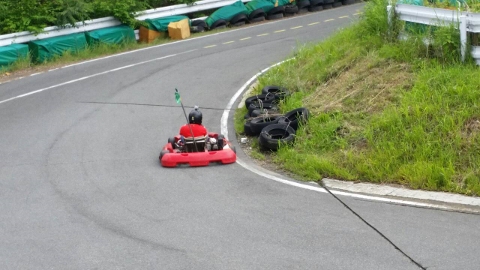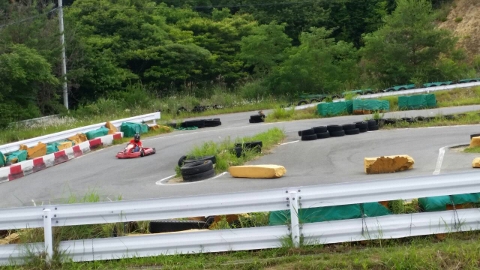Avoid the slide by finding the grip
Today we are going to work on one of the most important mistakes that new drivers make. As you approach the track and discover your racing line (see our earlier blogs post 8 through post 11) one thing that you should have picked up throughout all of those, is how important momentum is. This goes for almost all forms of motorsports. Momentum is key and when you can apply grip to that, then you are driving fast. I often tell my son, “if you are sliding after the apex, you are losing time.” That’s why this blog’s title is, “Avoid the slide by finding the grip.”

I was recently reading my friend’s blog post, “10 advanced go karting tips to go faster in an indoor go kart” and this is a great article. Tony, the author, puts these concepts in an easy to understand format that is good for both beginner and advanced drivers. He breaks down some scenarios and provides solutions to his examples. I particularly like it when he talks about using your brakes to find the grip going into a corner. Many people just want to drive fast and think that the only way to have a fast time is to have the throttle down all the way, all the time. It just doesn’t work like that. Patience is key in learning when to be full throttle and when to apply the different levels of braking pressure to maintain your grip.
Many outside factors make up the grip levels on a track. This applies to both indoor and outdoor racing. If you have the grip going into a corner then use that grip. At the indoor track that we frequent, SyKart, the track surface is very smooth and grip levels are low. There is some confusion about drifting versus slip angle. In many scenarios, drifting is applying the throttle, to spin the back wheels, to lose their grip, causing the car to slide sideways. Continuous use of the throttle during this event is drifting and having to counter-steer to maintain your direction of travel. Throttle-lift-oversteer is where you use the weight transfer and lifting off the throttle to help rotate the vehicle. The slip angle is the sliding that you are doing to pivot the car or kart to hit your desired apex. The advantage of the slip angle is that you are slowing down for the corner’s apex while keeping your maximum corner momentum, all while having little steering input.
I was also reading another article from Red Bull called, “Karting Mistakes Novices Make“. Although I agree with some of them, I think that they are making statements that are too vague to make have good meaning. It’s still a good read but there are some changes I would make and the priority of the order seems to be off. For example, in number four of their list, “Not using all the track” they mention that novice drivers should user every width of the track to the fullest extent. However, if you have the grip, there’s no need to make the track longer than it needs to be. On many technical courses, the track limits are where you want to be but that won’t be the case in every corner and in every situation. Going out to the track limits could expose you to vulnerabilities like being passed.

There are times when you can look at the surface of the track and see the potential for grip. If there is a high gloss to the track, there’s a chance that the surface may be low grip in that area. There are exceptions, such as the black glossy marks that show an obvious race line. That may be more sticky because the rubber is fresh on the track. Some tracks may have a coarse grain to them. They may be high in grip for short periods but you may also experience fast tire degradation. This is where you lose the performance of the tire due to wear and tear. Having a kart that is not set up correctly, like most any vehicle tire, will wear more quickly. Finding that balance is difficult: kart setup and tire degradation will determine how long your tires will last. Much like your kart setup, testing out how to drive on different surfaces is only going to mean more seat time to see how each track surface will feel and how it will factor into your discovery of the racing line.
